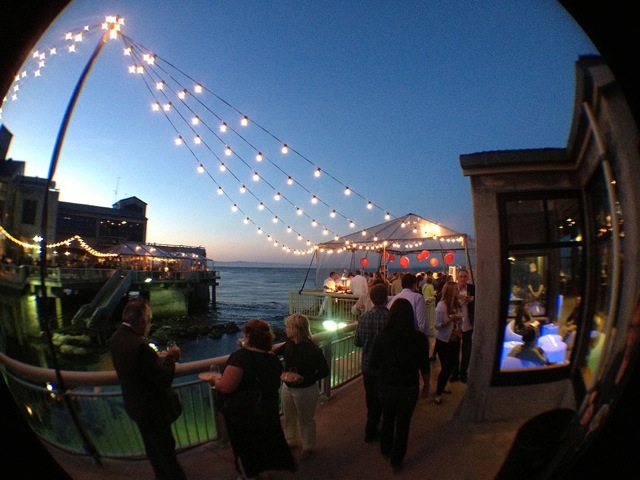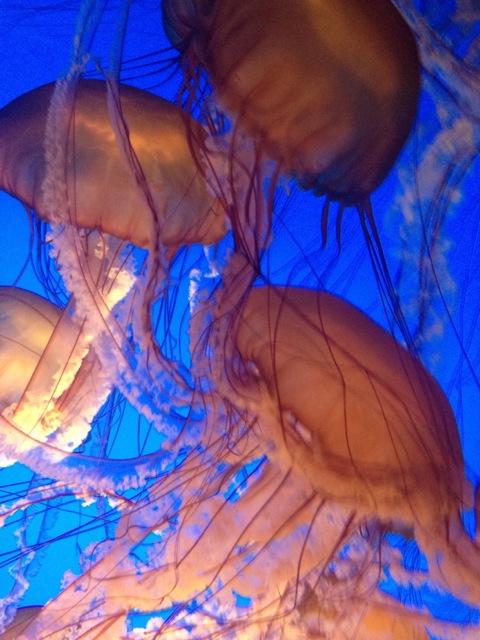 May 20, 2013 – Cooking for Solutions took a new approach this year, with less gloom and doom about declining fish populations and more optimism about programs that are beginning to show results—both in the seas and in other areas of the environment.
May 20, 2013 – Cooking for Solutions took a new approach this year, with less gloom and doom about declining fish populations and more optimism about programs that are beginning to show results—both in the seas and in other areas of the environment.
“The oceans still need our help, but we have many examples of successes out there, of using progressive consumerism to create change,” said Jennifer Dianto Kemmerly, director of the Monterey Bay Aquarium’s Seafood Watch program—host of the two-day conference which brought together journalists, chefs, farmers and environmentalists.
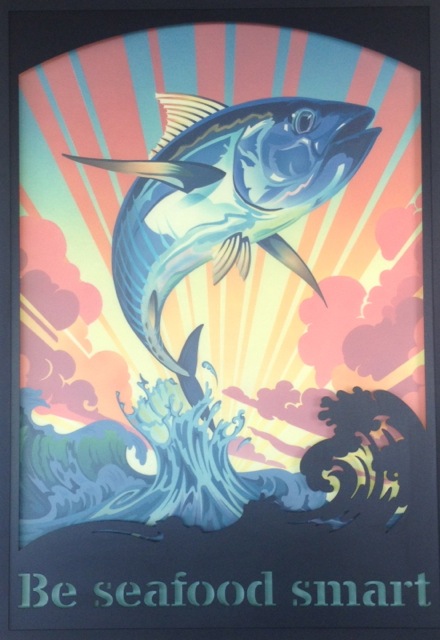 Seafood Watch was started by the aquarium in 1999 as a consumer awareness campaign and has evolved into an advisory body for seafood trade staffed by research scientists. “There are now more than 17,500 retail and restaurant businesses that base their buying decisions on Seafood Watch,” said aquarium Executive Director Julie Packard.
Seafood Watch was started by the aquarium in 1999 as a consumer awareness campaign and has evolved into an advisory body for seafood trade staffed by research scientists. “There are now more than 17,500 retail and restaurant businesses that base their buying decisions on Seafood Watch,” said aquarium Executive Director Julie Packard.
Recent successes include a ban on the sale of shark fins, which Seafood Watch lobbied for and will go into effect next month; and a new partnership with the Mars Corporation to make Sheba brand cat food with sustainably sourced seafood by the end of this year.
In addition, Chilean Sea Bass—which was on the brink of extinction due to overfishing—was recently moved off the red “avoid” list to the green list, so long as it’s line caught in the Falkland Islands. Monkfish from the North Atlantic also shows signs of recovering healthy numbers and was moved off the red list to yellow.
“Maybe people have heeded the pressure to not eat those species,” said Dr. Tom Pickerell, who oversees the research team at Seafood Watch. “Fishery management in these areas is good, but it takes time to get results.”
The role models
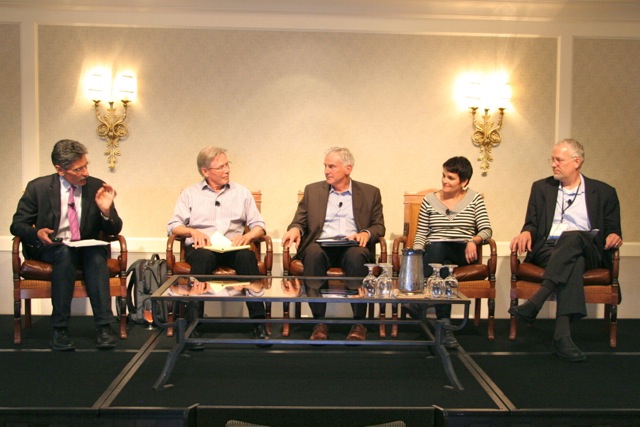
Panelists provided many more success stories and reasons to hope that humans will be able to fix some of the problems we have caused on the planet.
- Dr. David Orr spoke about bringing together organic farmers, architects, artists, the green energy movement and other “silo activities” into a unified community to create a 13-acre Downtown Arts District and stimulate employment in the heart of the rust belt city of Oberlin, Ohio.
- Dr. Patricia Majluf talked about how she enlisted the help of restaurants and the country’s best chefs to get people to eat more anchovies in Peru, rather than shipping them abroad as fish meal to be used for chicken and cattle feed.
- Susan Sokol Blosser spoke about the revitalization of agriculture going on where she lives in Yamhill County, Oregon, where young people and city dwellers are becoming “agri-preneurs” and helping build a strong local food economy.
- Matt Howard—the environmental sustainability director of Milwaukee, Wisconsin—was especially inspiring. Even though the city sits on the banks of Lake Michigan and has abundant water, it practices water conservation to “set an example of good stewardship.” They are also repurposing city-owned foreclosed homes into community gardens and commercial kitchens.
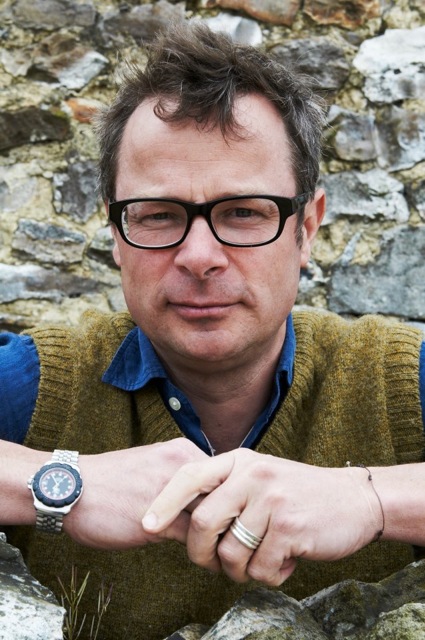
British chef Hugh Fearnley-Whittingstall was honored as Cooking for Solutions “Educator of the Year” for his work in calling attention to wasteful fishing practices. The founder of River Cottage and TV personality launched what he called “Hugh’s Fish Fight” denouncing the fact that half of the fish caught in the North Sea are thrown back dead. He made videos appealing to the public’s sense of thrift and using images of trawlers raking clean the seabed.
“I make no apologies for stirring things up and trying to create change. That’s what gets me up in the morning,” the celeb chef said. He’s aiming for a ban on discarded fish and has succeeded in getting the European Union to reform fish dumping policies, including a ban on dumping pelagic fish such as mackerel and herring.
Climate change was cited as another big threat to marine life. Oysters, mussels and sea urchins are all having to work harder to build their shells due to acidification of sea waters caused by more CO2 in the atmosphere; warmer ocean waters are forcing fish to leave their traditional habitats in search of colder climes; and something called hypoxia—or lower oxygen levels in the deep ocean—is sandwiching some species of fish into a shrinking layer of habitable ocean between the warmer upper waters and oxygen-less lower depths. Unusual upwelling of low oxygen water along the coast of Oregon has already killed tidal creatures.
“Climate change syndrome means oceans becoming more acidic, hotter and lower in oxygen, all factors that influence the things we eat,” said Dr. Larry Crowder, the science director at the Center for Ocean Solutions.
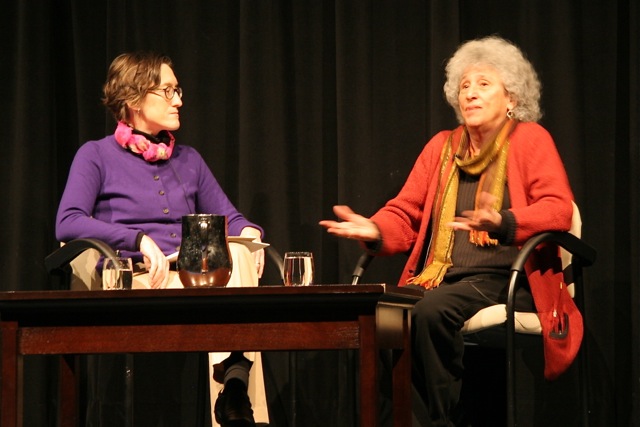
Climate change is also affecting the crops grown in California with some growers in the San Diego area pulling out avocado orchards in favor of more drought-tolerant olives, said Craig McNamara, president of the California State Board of Food and Agriculture. But he says farm labor shortages are having a greater impact on California farms, with growers switching from row crops to fruit and nut orchards that require fewer workers.
One solution is to teach more young people about where their food comes from, said McNamara, who owns a 500-acre walnut ranch near Davis. Young people suffer from a “nature deficit disorder” he believes, so he brings them out to a Farm Academy on his ranch.
Food politics
Nutritionist and author Dr. Marion Nestle slammed the Farm Bill currently under consideration in Congress and one year late. “The Farm Bill has no vision. They should scrap it and start over,” she said. Under the current farm bill, commodity crops such as soy, corn, rice and cotton get government subsidies in the form of crop insurance, while healthy fruits and vegetables get nothing.
“The USDA says half your plate should be fruits and vegetables, so the Farm Bill should reflect that,” argued Jeff Dlott, CEO of SureHarvest sustainability advisors.
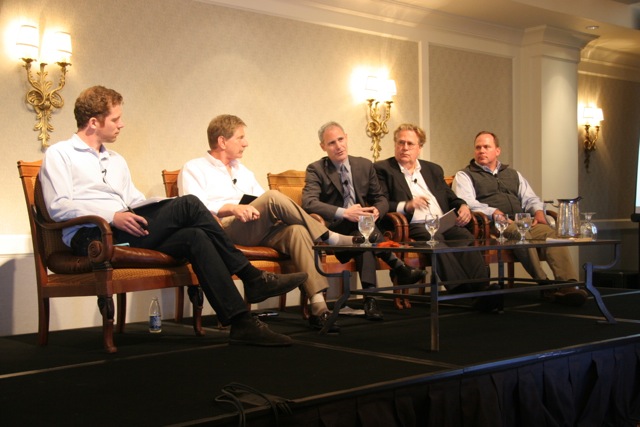
Opinions on GMOs or genetically engineered foods popped up throughout the conference, with City University of New York journalism professor and author Jeff Kaufman calling GMOs “the Syria of food politics.”
An alfresco breakfast session at Earthbound Farmstand in Carmel Valley painted the technology as a health hazard (see following story), panelists in the main session were not convinced that all GMOs are all bad.
“GMOs do not even make the list of the top ten environmental issues, yet it has taken up so much time and energy,” said World Wildlife Fund Senior VP Jason Clay, adding that the organization is against GE salmon because of the risk of them getting into the environment.
But what if technology could be harnessed for good, by creating nitrogen-fixing corn or crops that would produce more yield on less land and stop agricultural encroachment, the panelists asked. Kaufman even suggested developing luminescent trees that glow at night and eliminate the need for streetlights.
“The big elephant in the room is Monsanto, nobody wants one corporation controlling the world’s food supply,” he said. “We’ve got to find a way to separate GMOs from Monsanto but not throw the baby out with the bath water.”
Once again the conference provided plenty of food for thought, while the Cooking for Solutions Gala that followed on Friday evening fed the soul with deliciousness from 70 chefs and 60 wineries. In her opening remarks Julie Packard said the goal was “to get our message across by assembling an amazing experience that affects the heart as much as the head.” It worked.
About the author
Deborah Luhrman is publisher and editor of Edible Monterey Bay. A lifelong journalist, she has reported from around the globe, but now prefers covering our flourishing local food scene and growing her own vegetables in the Santa Cruz Mountains.
- Deborah Luhrmanhttps://www.ediblemontereybay.com/author/dluhrman/
- Deborah Luhrmanhttps://www.ediblemontereybay.com/author/dluhrman/
- Deborah Luhrmanhttps://www.ediblemontereybay.com/author/dluhrman/
- Deborah Luhrmanhttps://www.ediblemontereybay.com/author/dluhrman/


